Confederate Truths: Documents of the Confederate & Neo-Confederate Tradition from 1787 to the Present.
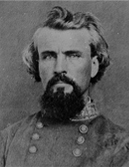

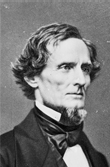
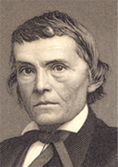

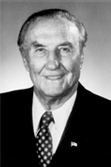
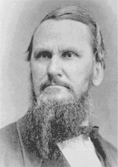
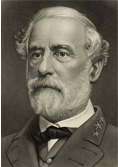
United Daughters of the Confederacy and their Red Shirt Shrine
In the June/July 2001 issue of UDC Magazine, "South Carolina Division Special Issue," with Oakley Park on the cover, there is an article on page 23-4, which is not so direct regarding white supremacy as their earlier articles on Oakley Park. It mostly focuses on the house itself as a building and its restoration. The lead in does explain that it is a "shrine to the Red Shirts" who addressed from the "balcony of Oakley Park" and that "This was the beginning of the movement to redeem South Carolina from Radical rule." The theme of the Red Shirt Shrine has not changed, it is just more discreet. Even though it is over 40 years since the Modern Civil Rights Era the United Daughters of the Confederacy (UDC) haven't changed. Also, the public has hear of the Ku Klux Klan since there are Ku Klux Klan groups operating even to this day. However, the Red Shirts are largely unknown to the general public, so neo-Confederate glorification of this other violent white supremacist group escapes public notice or is not comprehended for what it is.
In the past the UDC were much less disingenuous about why they revered Oakley Park.
The UDC South Carolina Division issued a publication with the cover, "United Daughters of the Confederacy, South Carolina Division: Golden Anniversary 1896-1946." In it on page 13 is an article titled, "Oakley Park, Edgefield's Red Shirt Shrine." Oakley Park is an old Plantation house which the South Carolina UDC division had decided in October 1944 to restore. The importance of this house for restoration is stated in the article, "Oakley Park was the home of General Martin Witherspoon Gary, who with his Red Shirts, in 1876, did so much to restore white supremacy in South Carolina."[1]
The article explains further:
The "Red Shirts" were largely ex-Confederate soldiers under the leadership of their one-time military commanders. Forbidden to organize into military companies and regarding the gray uniform of the Confederacy as inappropriate, the men arrayed themselves in red shirts and formed mounted bands which patrolled the State in the interest of the Democratic nominee for Governor., which was Hampton, against the Republican nominee, Chamberlain. "A white man's government", they said. Then followed a long struggle for control. The Republicans held the State House, and were sustained by United States troops. Conditions were desperate! The Democrats were determined to get the government back into the hands of the white people.
The Red Shirts, who gathered at Oakley Park and rode out from there were a great factor in achieving this, and in the election of Hampton in 1876, and thus was accomplished the overthrow of that "blackest abomination" – The Radical Government of South Carolina.
At the November 13, 1947 national convention of the UDC in Florida, the entire organization adopted the restoration of Oakley Park for a Red Shirt Shrine.[2] A series of reports follow from 1948 to 1950 in the Minutes and articles in the UDC magazine on the progress of restoration until it is completed by Mrs. J. Frost Walker (Cornelia Walker).[3]
The articles tended to focus on the theme of African Americans being ignorant and South Carolina being misruled, but some articles get to the point and state white supremacy as the great achievement. Strom Thurmond was the Dixiecrat candidate for President in 1948 in a southern Democratic rebellion against the support for civil rights by the national Democratic Party. In the March 1948 United Daughters of the Confederacy Magazine, pages 11-2, is an article, "South Carolina Governor Thurmond and Bride At Oakley Park," where a reception was held for them. In the same issue, pages 10-1, Mrs. J. Frost Walker, announces the project in an article titled, "A New Objective: Oakley Park." In this article Walker states that Oakley Park was a meeting place "… to consult and plan how to rescue South Carolina from radical rule." In other articles by Walker and others it becomes clear what was to these Confederate daughters so "radical" about South Carolina's Reconstruction era.
The following are some quotes from articles in the United Daughters of the Confederacy Magazine. I use the author's names as they have given them and unless otherwise given it is the regular report on the Red Shirts. It demonstrates the meaning of the Red Shirt Shrine to the UDC.
United Daughters of the Confederacy Magazine, March 1947, pp. 11-2, Mrs. J.A. Yarbrough, "General Wade Hampton."
…He devoted himself to the rehabilitation of his stricken State which was overrun by the Republican party with Negroes holding high offices. Great as was his war service, his leadership in the trying days that followed was even greater. …
… Exhausting every resource to secure peace and order, the white people of South Carolina determined to overthrow the government by a direct fight in 1876, and they selected as their leader, Wade Hampton. ….
… The famous Red Shirt campaign for the redemption of the State from outside and Negro rule is one of the great episodes of South Carolina history. …
United Daughters of the Confederacy Magazine, May 1948, pp.16-7, "A New Objective – Red Shirt Shrine," Mrs. J. Frost Walker.
"All whites over twenty-on years of age were required to take the 'iron-clad oath' before registering. This disenfrancished all the prominent whites and easily gave the ignorant negroes a majority.
United Daughters of the Confederacy Magazine, July 1948, pp. 12-3, "Origin of the 'Red Shirts' and Adoption of the Uniform," Caroline S. Coleman.
Carpetbaggers and scalawags flocked to the State from all parts of the nation, seeking rich plums and inciting hard feelings among the child-like Negroes who left alone would have turned to their own white folks as their best friends.
United Daughters of the Confederacy Magazine, September 1948, pp. 6-8, "The Great Triumvirate of the Reconstruction Period in South Carolina," Mrs. J.R. Carson. The article also asserts that allowing African Americans to vote was a mistake.
After the collapse of the Confederacy there was in South Carolina practically no civil authority; no organized State government, and no militia organization to afford protection of life and property. Garrisons of United States troops, many of them Negroes, former slaves, misled by passion, ignorance and evil counsellors, were stationed in the various towns and cities, and completely controlled the actions of citizens. Adventurers from without the State soon appeared to incite the Negroes to turn against their former owners, to become active in politics and to aspire to political office. Within a few years the control of the State government was rampant. Extravagance in the appropriation of public funds; dishonesty, disorder and a lawlessness reigned supreme, and for a decade the white population was helpless, and almost hopeless. …. No people in any time or anywhere faced so many difficult problems as did the people of South Carolina, and all of these at the same time. Social and economic, political and racial, all combined and interwoven, and upon the wise and proper solution of which depended not only white supremacy, but the very existence of the white race.
United Daughters of the Confederacy Magazine, March 1949, pp. 15, "Oakley Park," Mrs. J. Frost Walker. General Wallace was a member of the Red Shirts.
You will be pleased to know that a handsome portrait of General Wallace will be unveiled March 2nd in the South Carolina House of Representatives. It is a gift from the General's grandchildren to South Carolina.
Suitable ceremonies, a speaker for the occasion, and many distinguished guests will be present including Governor J. Strom Thurmond and other dignitaries.
Thus it is that the Reconstruction period will be memorialized anew in the historic hall and a leader will be honored who helped to save South Carolina for white supremacy.
United Daughters of the Confederacy Magazine, March 1960, pp. 25, Mrs. Thomas Walker Huey, Ex-President South Carolina Division, "Hampton and His Red Shirts."
The blackest spot on American history is the period following the War Between the States, the period characterized by Negro rule in the South. Historians have said that if Abraham Lincoln had not been assassinated the ten years of humiliation and degradation that formed the period of Reconstruction in the South would have never occurred. Be that as it may, Lincoln did not hold with political and social equality of the Negro. He once said, and I quote, "I protest now and forever against that counterfeit logic which presumes that because I do not want a Negro woman for a slave, I do necessarily want her for a wife. My understanding is that I need not have her for either." The following subjugation of the white population of the South by the ignorant and brutal Negroes would have seemed to Lincoln an insult to democracy. He constantly expressed his opposition to making the Negro the social or political equal of the white man.
[1] "United Daughters of the Confederacy, South Carolina Division: Golden Anniversary 1896-1946," no author.
[2] Walker, Cornelia, "Report of Oakley Park, The 'Red Shirt Shrine,' pp. 189-91, "The Minutes of the Fifty-Fifth Annual Convention of the United Daughters of the Confederacy," 1948.
[3] Walker, Cornelia, "Report of Oakley Park, The 'Red Shirt Shrine,' pp. 189-91, "The Minutes of the Fifty-Fifth Annual Convention of the United Daughters of the Confederacy," 1948; Walker, Cornelia, "Oakley Park Report ("The Red Shirt Shrine", located at Edgefield, SC)," pp. 188-191, ""The Minutes of the Fifty-Sixth Annual Convention of the United Daughters of the Confederacy," 1949; Walker, Cornelia, "Oakley Park: The Red Shirt Shrine (Final Report)," pp. 189-192, ""The Minutes of the Fifty-Seventh Annual Convention of the United Daughters of the Confederacy," 1950. Most issues of UDC Magazine for 1948 & 1949.